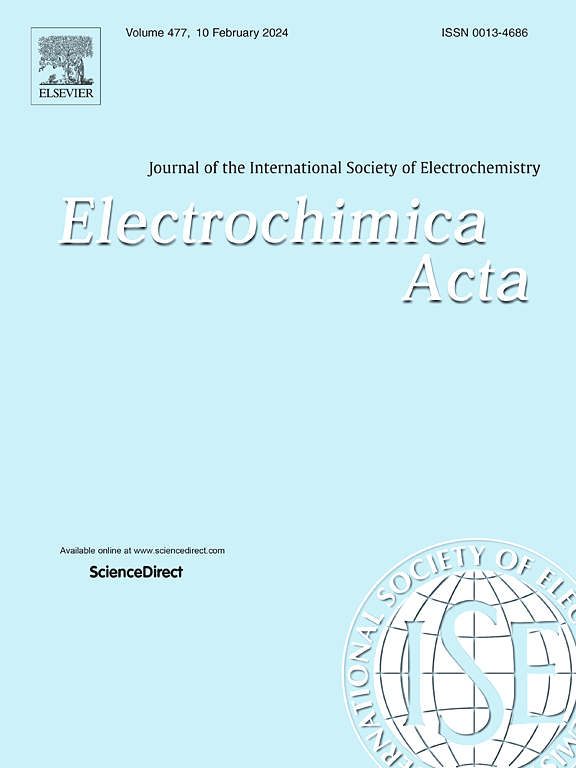In-Situ Polymerization of Poly(1,3-dioxolane) Gel Electrolytes Modified with LLZTO nanoparticles for High-Performance Lithium-Metal Batteries
IF 5.5
3区 材料科学
Q1 ELECTROCHEMISTRY
引用次数: 0
Abstract
Gel polymer electrolytes (GPEs) based on poly(1,3-dioxolane) (PDOL) have been developed due to their excellent lithium metal compatibility and convenient in-situ polymerization synthesis. A PDOL-based GPEs is obtained by in-situ polymerization, in which introduce Li6.5La3Zr1.5Ta0.5O12 (LLZTO) solid-state fillers and Succinonitrile (SN) functional additives, named as PDOL-SN/LLZTO. The PDOL-SN/LLZTO exhibits high ionic conductivity of 5.19 × 10-3 S cm-1 and high lithium-ion transference number (tLi+) of 0.79 at room temperature, as well as expanded electrochemical window of 4.85 V. For Li||Li symmetric cells, it achieves stable cycling over 2000 hours at a current density of 0.1 mA cm-2. Benefiting from the enhanced interfacial stability due to LLZTO doping, Li||LiFePO4 cells provide a high initial capacity of 146.3 mAh g-1 at 1C, with a capacity retention of 84.5% after 1000 cycles at 1C. So, the glass fibre-based PDOL provides an important approach and facile strategy for designing high-performance lithium-metal batteries.高性能锂金属电池用LLZTO纳米颗粒改性聚(1,3-二恶氧烷)凝胶电解质的原位聚合
基于聚(1,3-二氧代烷)(PDOL)的凝胶聚合物电解质(GPEs)由于其优异的锂金属相容性和方便的原位聚合合成而得到了广泛的研究。采用原位聚合法制备了一种pdolgpe,其中引入了Li6.5La3Zr1.5Ta0.5O12 (LLZTO)固态填料和丁二腈(SN)功能助剂,命名为pdolsn /LLZTO。在室温下,pdl - sn /LLZTO具有5.19 × 10-3 S cm-1的高离子电导率和0.79的高锂离子转移数(tLi+),以及4.85 V的扩展电化学窗口。对于Li||Li对称电池,它可以在0.1 mA cm-2的电流密度下实现2000小时的稳定循环。得益于LLZTO掺杂增强的界面稳定性,Li||LiFePO4电池在1C下提供了146.3 mAh g-1的高初始容量,在1C下循环1000次后容量保持率为84.5%。因此,基于玻璃纤维的PDOL为高性能锂金属电池的设计提供了重要的途径和便捷的策略。
本文章由计算机程序翻译,如有差异,请以英文原文为准。
求助全文
约1分钟内获得全文
求助全文
来源期刊

Electrochimica Acta
工程技术-电化学
CiteScore
11.30
自引率
6.10%
发文量
1634
审稿时长
41 days
期刊介绍:
Electrochimica Acta is an international journal. It is intended for the publication of both original work and reviews in the field of electrochemistry. Electrochemistry should be interpreted to mean any of the research fields covered by the Divisions of the International Society of Electrochemistry listed below, as well as emerging scientific domains covered by ISE New Topics Committee.
 求助内容:
求助内容: 应助结果提醒方式:
应助结果提醒方式:


